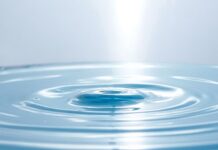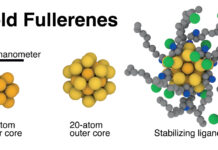
Fabrics that resist water are essential for everything from rainwear to military tents, but conventional water-repellent coatings have been shown to persist in the environment and accumulate in our bodies, and so are likely to be phased out for safety reasons. That leaves a big gap to be filled if researchers can find safe substitutes.
Now, a team at MIT has come up with a promising solution: a coating that not only adds water-repellency to natural fabrics such as cotton and silk but is also more effective than the existing coatings. The new findings are described in the journal Advanced Functional Materials, in a paper by MIT professors Kripa Varanasi and Karen Gleason, former MIT postdoc Dan Soto, and two others.
“The challenge has been driven by the environmental regulators” because of the phaseout of the existing waterproofing chemicals, Varanasi explains. But it turns out his team’s alternative actually outperforms the conventional materials.
“Most fabrics that say ‘water-repellent’ are actually water-resistant,” says Varanasi, who is an associate professor of mechanical engineering. “If you’re standing out in the rain, eventually water will get through.” Ultimately, “the goal is to be repellent—to have the drops just bounce back.” The new coating comes closer to that goal, he says.
Because of the way they accumulate in the environment and in body tissue, the EPA is in the process of revising regulations on the long-chain polymers that have been the industry standard for decades. “They’re everywhere, and they don’t degrade easily,” Varanasi says.
The coatings currently used to make fabrics water repellent generally consist of long polymers with perfluorinated side-chains. The trouble is, shorter-chain polymers that have been studied do not have as much of a water-repelling (or hydrophobic) effect as the longer-chain versions. Another problem with existing coatings is that they are liquid-based, so the fabric has to be immersed in the liquid and then dried out. This tends to clog all the pores in the fabric, Varanasi says, so the fabrics no longer can breathe as they otherwise would. That requires a second manufacturing step in which air is blown through the fabric to reopen those pores, adding to the manufacturing cost and undoing some of the water protection.
Read more: Let it rain! New coatings make natural fabrics waterproof
thumbnail courtesy of phys.org















